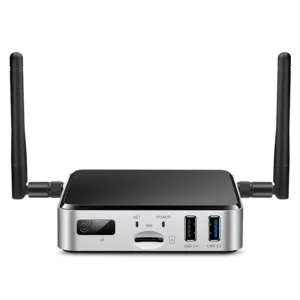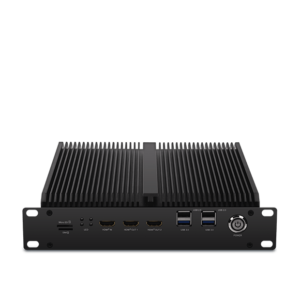Real-World Programs of AI on Side Devices
Real-World Programs of AI on Side Devices
Blog Article
Real-World Programs of AI on Side Devices
Real-World Applications of AI on Edge Devices
Synthetic intelligence (AI) is no longer limited to the region of big, centralized knowledge centers. Thanks to developments in technology, side devices now enjoy a key position in deploying AI directly wherever data is generated. But what does AI on side products suggest, and why is it producing this type of thrill? Here, we'll examine how edge ai device operates in actuality through edge products and learn its wide range of useful applications.

What's AI on Side Devices?
AI on edge products identifies deploying artificial intelligence algorithms directly on products like smartphones, cameras, drones, or IoT sensors. These devices do not need use of centralized hosts for processing knowledge; instead, they perform analysis and choices domestically, making the method quicker, more effective, and often more secure.
The "edge" here simply identifies computing performed near or at the source of knowledge era, instead of counting on the cloud. That change is pushed by the needs for real-time knowledge control and the requirement to minimize latency, increase privacy, and reduce bandwidth usage.
Critical Real-World Purposes of Side AI
1. Wise Security
AI-powered cameras built with skin acceptance, activity detection, and anomaly detection are transforming security systems. Edge devices in that domain may analyze video channels in real-time to recognize suspicious actions, remove fake alarms, and increase public safety. As an example, AI calculations may detect unusual activities and alert authorities instantly without the necessity to send movie knowledge to a central machine for analysis.
2. Healthcare Monitoring
Wearable products and lightweight medical gear are leveraging m.2 ai accelerator for handling health information more efficiently. Edge-based AI in devices like health trackers and smartwatches screens users' vitals, such as heartbeat, oxygen degrees, or blood stress, in real-time. These methods analyze data domestically and provide fast feedback, paving the way for quicker intervention throughout emergencies.
Beyond wearables, advanced medical imaging products built with on-device AI may find signals of disorders like cancer, allowing earlier diagnoses even yet in remote areas without web connectivity.
3. Autonomous Cars
Self-driving cars are among probably the most well-known types of side AI in action. With sensors, cameras, and LiDAR methods offering as data resources, AI computations take place onboard these vehicles to produce split-second decisions. From detecting pedestrians and limitations to navigating town streets, edge AI guarantees that the car works easily and efficiently. The real-time handling capability of edge products eliminates the reliance on high-latency cloud methods, ensuring safety in life-critical scenarios.
4. Retail Analytics
Edge products in retail situations are helping firms analyze customer behavior. Wise cabinets and AI-equipped cameras may detect customer choices, monitor catalog, and actually customize in-store activities in real time. The information developed from these units assists suppliers produce informed decisions, improve customer care, and optimize stock management.

5. Professional IoT
Factories and commercial flowers are adopting side AI to revolutionize their tracking and automation processes. AI-powered detectors on machinery detect potential flaws long before they result in expensive failures. Predictive maintenance driven by side AI decreases downtime, increases output, and guarantees protection on the manufacturing floor.
6. Personalized Activities in Client Devices
Your smartphone is an excellent exemplory instance of how edge AI personalizes person experiences. Features such as for example voice assistants, flexible camera controls, and on-device language translation use real-time AI to answer user wants without giving sensitive data to outside servers. This fosters both comfort and privacy for the end user.
The Rising Influence of Side AI
The usage of AI on side devices remains to spike, pushed by industries' increasing need for low-latency, real-time computing, and greater knowledge privacy. Its purposes are reshaping industries ranging from healthcare and automotive to community protection and retail. By adding AI's energy nearer to where knowledge is produced, edge units are not only improving performance but additionally showing the countless possible of advancement in today's related world. Report this page